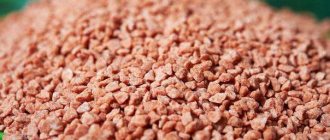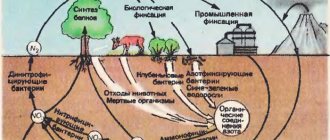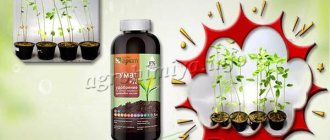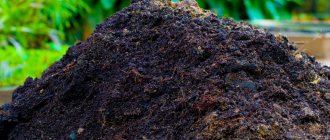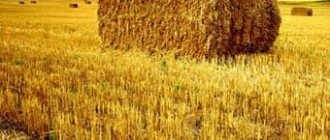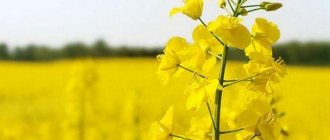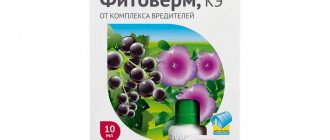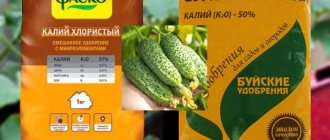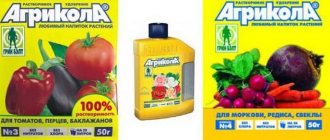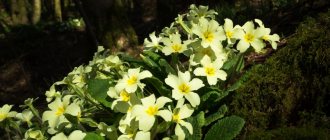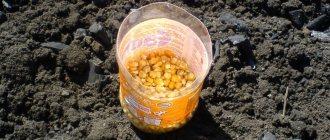Peculiarities
The value of quail droppings as fertilizer is simply enormous. Cow milk, for example, is almost four times richer in chemical composition. It contains 30 times more nitrogen and 8 times more phosphorus than horse manure.
Quail droppings, the use of which can be useful for most garden crops, can “burn” the roots and green mass of plants if used incorrectly. That is, it differs in approximately the same properties as chicken. It is believed, however, that the latter is even slightly superior in nutritional value to quail manure.
Which crops are quail droppings best suited to?
Microelements contained in guano contribute to better growth of green mass of plants, accelerated fruiting and ripening, growth of the root system and the overall health of garden crops.
Quail droppings are suitable for most garden crops, of which the following types of plants respond best to it:
- Tomatoes.
- Cucumbers.
- Cabbage.
- Pepper.
- Grape.
- Cherry.
- Apple tree.
To fertilize the grapes, once a year the droppings are placed in holes between the bushes, at a distance of half a meter from each other.
Having fed the grapes with guano stored in the pits, they must continue to be fed with mineral fertilizers during the fruiting season and preparation for the winter period. Then the vine will ripen well and go into winter with a full set of nutrients, and next year it will give a rich harvest.
When growing tomatoes in the spring, dry manure is added to the soil, then watered with a solution throughout the entire growing season.
Peppers and cucumbers are watered with the solution until the fruit appears.
When feeding plants, you should not limit yourself to just a solution. The harvest will be much richer if dry quail guano is brought to the site in the fall and dug up. If the autumn application of guano was not carried out for some reason, it is worth feeding the plants with mineral fertilizers in the summer.
When growing potatoes, quail droppings are used with additional potassium fertilizers added to the soil, because quail guano contains little potassium, and potassium is necessary for this crop. It doesn't have enough potassium even for other root vegetables, such as beets and carrots. Therefore, it is recommended that when adding quail manure to the soil, add more ash. The use of this product together with ash, which contains a lot of potassium, gives good results in increasing the yield. If there is no ash, you can use mineral fertilizers, for example, potassium chloride, at the rate of 100 g per 1 square meter.
Main advantages
Quail droppings as a fertilizer have earned excellent reviews from gardeners primarily for their rich mineral composition. Also, the advantages of this type of feeding are:
- the presence of special substances that prevent the development of pathogenic microflora in the soil;
- long period of beneficial effects on the soil (about 3 years);
- the ability not to lose its properties even after very long storage.
You can buy quail droppings in bags in specialized stores without fear. There will be no less nutrients in such fertilizer than even in fresh fertilizer. The beneficial substances contained in quail manure are absorbed by plants much better than those that enter the soil when using artificial, industrially produced compounds.
When using quail droppings:
- the degree of soil fertility on the site increases significantly;
- the ripening time of root crops is reduced;
- Plant productivity increases significantly.
How to apply quail manure?
The method of using quail droppings as fertilizer depends on its condition, because in each of these states it has certain properties :
fresh excrement is very toxic, but after treatment with bacterial preparations it is heated to a temperature of 40–70 degrees;
- partially rotted droppings are less toxic, but still pose a threat to plants, and under no circumstances can raise the temperature;
- humus is non-toxic, does not raise the temperature, but contains substances (humic acids) that can be absorbed by plants;
- the effect of fertilizing depends on its condition.
Fresh
Fresh material is used to heat beds , but for this no more than three months should pass from the moment of collection, otherwise it will lose too much nitrogen due to the evaporation of ammonia, and bacteria will have time to ferment most of the organic matter, which is why the heating will be very weak.
For such heating, a trench is dug under the bed, which is filled with fresh excrement. Then the contents of the trench are treated with bacterial preparations and, after starting the “burning” reaction, they are covered with earth to form a bed.
In addition, fresh droppings in the fall, immediately after harvesting the remaining vegetation, are applied to fields left fallow, after which they are immediately dug up or plowed to mix with the soil. Then they are watered abundantly and treated with bacterial preparations.
This fertilizer attracts worms, and the drug accelerates the proliferation of bacteria, due to which the entire process of decay takes about a year and is completed by next autumn .
Worms, in addition to producing humus, will also improve the structure of the soil, making it looser, which will increase the soil's ability to pass water and increase the amount of nutrients that flow to the roots of plants.
Partially rotted
Most often, this material is used to fertilize fields after harvesting, because unlike fresh droppings, which take a year to rot, partially rotted excrement loses toxicity much faster and turns into humus.
Moreover, they still retain enough of the original organic matter to attract worms, so that by the time of planting, not only the chemical composition of the soil, but also its structure will improve.
As in the case of fresh excrement, immediately after introducing the droppings, the area must be dug up or plowed, then treated with bacterial preparations that will accelerate the conversion of organic matter into humus.
You can also fertilize holes with this material before planting seeds or seedlings. To do this, make a hole 10–15 cm deeper , then quail droppings are poured onto the bottom in a layer 5–10 cm thick, then 5 cm of soil is poured on top, which will separate the fertile soil from the droppings and protect against toxic effects.
When an individual plant begins to suffer from vitamin deficiency or lack of nutrients, it can be fertilized with partially rotted quail droppings.
To do this, the material is laid out in a ring around the trunk at a distance of 15–50 cm (the greater the thickness and height of the ring, the further it needs to be moved from the trunk) and watered with water.
Partially rotted droppings are good for indoor plants . To fertilize, the plant is removed from the pot and a deeper container is taken, then a layer of manure and a layer of separating soil are poured onto the bottom, after which the plant is planted in it.
Humus
Humus from quail manure does not harm plants, so it can be used both for making soil mixtures and for:
- fertilize the soil before planting seeds or seedlings;
- mulch areas or individual plants.
The soil mixture is suitable for germinating seeds or young seedlings , because it is more filled with nutrients than even soil taken from a field that has been left fallow for a year.
To prepare the soil mixture, mix:
- 10 parts humus;
- 10 parts garden soil;
- 1-2 parts sand.
If you have to plant seeds or seedlings in not too rich soil, then the holes are made 5–10 cm deeper and filled with humus, and then covered with soil mixture, into which the seed is planted.
This method of preparation makes it possible to obtain strong seedlings even on poor lands ; however, to increase productivity, it is necessary to cover the plant with humus after the first leaves appear.
If the plant is perennial, then it needs to be covered with humus every year, or better yet, 2 times a year - first in early spring, then in late autumn.
To fertilize the soil over a large area or around an individual plant, it is covered with a layer of humus, and it should not reach the lower leaves or fruits.
Digging or plowing will slightly speed up the mixing of soil with fertilizer, but even without it, rotted quail droppings will fill the soil with nutrients and will be completely mixed with it in 1–2 years.
Top dressing
The method of applying fertilizer depends on its condition.
If it is completely rotten, then it is diluted with water, with 10–100 liters of water per 1 liter or kg of the original litter.
The amount of water is not critical, because it is intended only to make it convenient to work with fertilizing, that is, to supply it to the plants using a watering can or hose.
If it is not completely rotted and still has an unpleasant odor, and also bubbles at least a little, then the minimum amount of water is 50 liters , and the maximum can be even 300 liters.
Fertilizing is used only in cases where it is necessary to quickly support the plant, providing it with nutrients and microelements, and there is no completely or partially rotted droppings. Therefore, on poor or depleted soils, it is necessary to fertilize the plant with such fertilizers 3–5 times per season.
Disadvantages of fertilizer
The only substance harmful to plants that is part of quail manure is uric acid. “Burns” on the leaves and roots of plants are the main unpleasant consequence of the incorrect use of such fertilizer as quail droppings by beginners. How to use this fertilizer with the greatest efficiency and at the same time not harm the plants - we will look at this in detail below. Perhaps the information presented in the article will help some summer residents avoid annoying mistakes when using such fertilizer.
In addition to the uric acid included in the composition, some disadvantage is that the droppings contain very little potassium. This substance is useful for the growth of potatoes and some other root vegetables. Therefore, when using quail droppings as a fertilizer for such crops, gardeners have to additionally use other types of nutritional compositions. Most often, wood ash is used in combination with such manure. Sometimes vegetable compost of the last stage of decomposition is also used for this purpose.
Mistakes when using quail droppings
In order to use quail droppings with maximum benefit, without destroying plants, or harming yourself and your loved ones, you should follow certain rules:
- Do not use manure purchased from someone else. You should buy industrially produced litter.
- To use guano from your poultry house, you must first be tested at a veterinary clinic for worm eggs and salmonella.
- Do not use fresh droppings for feeding, but process them.
- Do not apply foliar feeding with guano solution.
- If liquid fertilizer gets on the leaves, the plant may get burned. In case of accidental contact, immediately rinse the plant with clean water.
Fresh bird droppings, due to their high uric acid content, can cause inhibition of plant growth and death of the root system. Its toxic effect can destroy young seedlings, adult plants, even trees and shrubs.
Quail may be infected with parasites and/or pathogens. In case of salmonella infection, the bird should be treated with prescribed medications, the poultry house should be cleaned and disinfected, and the guano should be burned. If parasites are found in quails, it can be left for the winter, scattered in a thin layer. At temperatures of -15 degrees and below, the parasite eggs die, then after winter the guano can be used to fertilize the garden.
It is preferable to apply quail droppings to the beds in the fall; after lying in the soil over the winter, the manure is better absorbed by plants.
Men suffering from weakened potency are recommended to eat 3-4 quail eggs a day. Potency will increase.
Composting
The main purpose of processing quail droppings is to remove uric acid from it. Gardeners usually do not have to perform any particularly difficult actions to cleanse this type of manure from such a harmful component. To get rid of uric acid, the gardener only needs to wait a little. Quail manure burns out in about the same time as cow manure - within several months.
Drying this type of fertilizer at home is not recommended. With this method of processing, many useful substances, including nitrogen, are “eroded” from the mass. Before using in the garden, quail droppings are usually not dried, but composted.
This operation is carried out in several stages:
- a large barrel is washed with clean water;
- droppings are placed on its bottom in a layer of 20 cm;
- 30 cm of straw is laid on top;
- manure is poured back in.
Thus, the barrel should be filled to the top. When composting quail manure, straw is necessary to absorb excess moisture. Instead, if desired, you can use ordinary sawdust. Quail manure in a barrel will turn into humus in about three months.
Since the composting process heats up the mass very much, all harmful microorganisms and protozoa die in it. Therefore, the fertilizer is also safe in terms of infecting plants with any infectious or parasitic diseases.
This is approximately how quail droppings are prepared as fertilizer. How to use this compost? The answer to this question, of course, is also of interest to many summer residents. You can use quail humus processed in this way to feed garden crops at any time. However, most gardeners believe that the greatest effect from using this type of fertilizer can be achieved when it is applied to the soil in the fall - before digging.
Sometimes quail droppings are used in the spring. However, some gardeners still believe that applying this type of fertilizer to the soil in April-May can negatively affect plant productivity.
Fresh or dry
Despite the great advantages, the use of raw materials has many limitations. The dosage and frequency of soil treatment must be strictly observed. Uric acid inhibits the development of seedlings and plants. Failure to comply with the requirements leads to the accumulation of nitrates, which are dangerous to humans.
Fresh fertilizer from quail droppings must not be applied to the soil. In this state, it is toxic and leads to disease and even death of crops.
Dry droppings, on the contrary, enrich the soil. When applying, you must be guided by the following norm: in the dry version, 250 grams of litter will be required per 1 m2, and in the liquid version, 300-700 grams for the same area.
To get rid of the decomposition of excess nitrogen, it is recommended to store the fertilizer together with straw and sawdust.
Rules and regulations of application
Even experienced gardeners do not always know how to properly use quail droppings of one type or another. When receiving fertilizer, the first thing you need to do is prepare a barrel for storage. The manure is laid in such a way that the first layer (20 cm) consists of fresh fertilizer, then a layer of sawdust and straw, then again quail raw materials, and so on until the container is completely filled.
To prevent sawdust from absorbing moisture, they are well moistened without losing their ability to absorb harmful components and nitrogen compounds. After a short soaking, a multi-component humus is obtained. The time for infusion is about 30 days. During this period, pests and parasites will die.
After composting, quail droppings are ready for use. The procedure for treating the soil to enrich it is carried out in the fall. You should not use the fertilizer in question in the spring, as there is a risk of a negative impact on the quality of crop emergence.
How to prepare liquid fertilizer
Quail manure compost is a very good fertilizer. But the process of preparing it usually takes quite a long time. Therefore, gardeners often use another type of fertilizer made from such droppings - liquid. The technology for preparing such fertilizer is as follows:
- a clean barrel is half filled with droppings;
- water is poured from above to the brim;
- everything is mixed properly with a stick;
- The barrel is covered with a lid.
In this form, quail droppings should be kept in a barrel for about a week. Before applying to the soil, the fertilizer prepared in this way is diluted with water in a ratio of 1:20.
You can strengthen plants and increase their productivity when using liquid fertilizer. We’ll talk about how to fertilize garden crops with quail droppings processed in this way below. It is important for any summer resident to know, however, that such a solution cannot be considered a complete fertilizer. It is usually used to feed plants only in the summer - in order to provide additional nutrition.
Reviews
To find real reviews on how best to use quail manure as a fertilizer, is there a difference compared to the excrement of rabbits, sheep, goats, and other animals, and what results of such use are observed, you need to carefully read the forums where users discuss all these questions .
Often, several experienced gardeners or gardeners have completely different opinions about the same fertilizer, so it is necessary to take into account not only the conclusion, but also the conditions in which they applied the fertilizer.
This is exactly the experience shared by forum users, a list of which we have prepared for you:
- Our farm;
- Farmer RU;
- Hydroponics;
- Merry courtyard;
- Miracle garden;
- Construction Forum;
- Wap quail.
Is it worth purchasing industrially processed litter?
Not all summer residents keep quails on their country plots. However, it is not worth giving up such effective feeding in the absence of this type of poultry in the backyard. You can purchase quail droppings in a specialized store. This type of feeding is relatively inexpensive. Industrially prepared quail droppings contain no less useful substances than “homemade” droppings.
This type of manure is processed at enterprises using special methods - by drying under the influence of very high temperatures. At the same time, all useful substances are completely preserved. On plants, such manure, since it is processed in compliance with the conditions of bacterial fermentation, usually has an even more pronounced beneficial effect than “homemade” manure.
Quail droppings from industrial production
Purchasing industrially processed quail manure will allow you not to worry about possible contamination of the soil with parasite eggs and/or infectious diseases. On poultry farms, sanitary and epidemiological control of the condition of poultry is carried out, and the industrial processing of quail guano involves heat treatment and the use of bacterial fermentation, which results in the death of pathogens and weed seeds.
Also, the thermal drying methods used by industry lead to the enrichment of manure with minerals, and fertilizers from quail guano, produced at a poultry farm, contain a much larger amount of substances useful to plants:
- Nitrogen – 5%;
- Phosphorus – 3-4%;
- Potassium – up to 2.5%.
It is impossible to achieve such an increase in nutrients using home remedies, which indicates the high quality of industrial raw materials, but bird guano already enriches the soil quite well. Therefore, it is quite possible to use guano from a poultry house to feed plants. Thus, if all the rules are followed, the use of quail manure to increase soil fertility in your own garden or vegetable garden gives good results in improving soil structure and yield.
Quail droppings as fertilizer: how to use
Even when diluted with water, this type of fertilizing can “burn” the plants. Therefore, it should be used with caution. Watering the beds is allowed only between the rows. For 10 m2 of plantings, it is worth using no more than 6-8 kg of diluted litter. After the beds are fertilized, they should definitely be additionally watered with a hose (to wash away the remaining solution from the leaves and stems).
Too much of this fertilizer cannot be used for feeding. An overdose can lead to oppression of plants and a slowdown in their development.
Preparation of fertilizer
If quail remedy is used to maintain plants, then adhere to the following recommendations:
- The container is filled with droppings and water in a 1:1 ratio.
- The contents are thoroughly mixed and infused for a week.
- The mixture is diluted with water. A 10-liter bucket will require 0.5 liters of product.
Saturation with microelements is used in summer for irrigation.
Heat treatment
The solution to the problem will be to purchase raw materials from a poultry farm, where they are dried under high temperature. Among the advantages of the procedure are the following:
- all useful substances are preserved;
- absence of pathogenic microorganisms and weed seeds;
- allowed for feeding seedlings.
Proper use produces a beneficial effect, productivity increases by 2-3 times.
If fresh manure contains 1.5-2% nitrogen, 1.5% phosphorus, and 0.7-1% potassium, then after heat treatment the figures increase to 5, 3-4 and 2.5%, respectively.
Types of composting
The goal is to obtain high-quality organic matter. Composting comes in several types, differing in action and duration:
- Passive. You will need the required volume of quail product, which is evenly laid out on a wooden surface. Organic matter is protected from precipitation. The compost is infused for 5-9 months. The quality of the resulting product is somewhat lower than with other types of composting, since the substances will slowly decompose into molecules, losing useful microelements.
- Active. It has a similar production method, but during the preparation process special chemicals are added to maintain the vital activity of beneficial microorganisms. The droppings are heated, replenishing lost elements. The final product is of higher quality than with the passive method. Chemistry allows you to neutralize toxins, improving the composition, and heating activates the work of beneficial microflora.
- Fermentation. It consists of adding biologically active microorganisms that improve the quality of humus.
These options have a high result, but require additional costs.
Effective liquid feeding
This fertilizer can be prepared by fermentation. For this purpose, substances are used that accelerate processes. Small sawdust treated with a special compound is poured into the cage with the bird. When cleaning the cage, droppings are collected and watered with a product to speed up the process. This is how preparation for fertilizer is done.
If the preparation is carried out in the cold season, then the finished product is stored in the garden for a month: this way the pungent smell will not be felt. The advantage of this method is the absence of weeds.
Helpful advice
Quail droppings are a truly effective fertilizer. And therefore, this type of feeding is actually in great demand on the market. Consequently, summer residents who keep quail in their household plots, and farmers who raise this bird in large quantities, can make a good profit simply from selling the litter. This fertilizer costs about 2-3 rubles. per kilogram. Some farmers mix quail manure with peat before selling. You can store litter directly in the barn. It has practically no smell.
Fertilizer application methods
The introduction of nutrients and elements is carried out in two ways:
- Root feeding - consists of applying fertilizers dissolved in water at the root of each bush. Performed on a damp surface. This type is suitable for warm and sunny summers. The best time to do it is early morning or evening. It is considered an effective way to apply fertilizers.
- Foliar feeding - characterized by spraying the foliage and stems of plants with a nutritional composition. Best done in cold summers or low temperatures. Recommended for use in the evening or on a cloudy but not rainy day. It is used for alternation with root feeding or when it does not bring the expected results.
Fertilizing indoor plants
Some indoor plant growers are often interested in the question of how to fertilize indoor plants with quail droppings. Growing fruit plants in houses and apartments is rare. Most often, the main activity stops at keeping flowers in pots. It is not advisable to introduce droppings into the soil by mixing it with a small volume of soil. Most often, fertilizer in small doses is placed on top of the soil, and the nutrients get to the roots of the flowers with each watering.
We must not forget that a large dose of applied fertilizers can negatively affect the condition of plants. Experts advise pouring no more than half of 1 tsp. into one container. The location of the compost is equally important. It should be placed at a safe distance from the stem so that the product does not leave burns on it.
Features of litter processing
Plant nutrition plays an important role in obtaining a good harvest. But in order for the droppings from domestic quails not to destroy the plants due to the uric acid they contain, it is necessary to process it. Processing quail manure means keeping it. This procedure has its own characteristics that anyone who decides to do this should know.
The most effective method of curing is composting. Quail droppings containing urea must sit for several months to reduce the level to a safe level. Using a fresh product will not bring the desired effect, but will only damage the plants. At home, processing quail droppings occurs as follows:
- Prepare a large container (barrel, metal tank, etc.).
- Pour in liquid quail droppings.
- Add a layer of sawdust or straw.
In proportion, loaded compost from fresh quail droppings should contain only 40-45% manure and 55-60% additives. Straw and sawdust absorb urea and become wet. Wet additives completely rot during infusion, which leads to evaporation of urea. Processing fresh quail droppings also allows you to rid the rotting masses of harmful parasites during settling. In 2-3 months a person can receive a clean, ready-to-use product in the form of organic fertilizer.
Every gardener uses quail droppings as a high-quality feed for fruit plants in order to obtain a good harvest in the summer season. The soil receives the minerals it needs, which leads to increased growth of seedlings. We must not forget that feeding itself also requires certain knowledge in this area. Compost should be used for its intended purpose only in the fall, so that the quail droppings are well absorbed into the soil before the cold weather. It is forbidden to add compost in the spring: such actions can lead to disruption of the growing season and ripening of the fruits themselves.
What do summer residents talk about?
Quail droppings, a wide variety of organic fertilizers, have become less popular in recent decades than they used to be.
This is not due to the poor qualities of the product itself, but to the fact that specialized supplements have appeared on the market that do not require lengthy processing. But why buy something new if a number of quails are raised on the plot? In addition, for garden purposes, manure is no worse than specialized products.
There are also certain standards governing the proper use of quail droppings in order to obtain the highest possible yield from vegetable crops. The owner of the garden should:
- Use quail droppings for white cabbage at the rate of 2 kg/sq. m.
- Use manure for pumpkin and tomatoes at 3-4 kg/sq.m. m.
- Fertilize root crops at 2-2.5 kg/sq. m.
- Use 2-2.5 kg/sq. m. substances for onions, garlic and herbs.
Experienced gardeners have noticed that quail droppings as a fertilizer have some characteristics that manifest themselves differently depending on the frequency of its use. So, in 1 year, manure is similar to other fertilizers, but in the next 2-3 years you can notice a significant increase in the amount of yield. We must not forget that quail droppings can be different. It depends on the quality of the birds’ food, their health, age and even breed.
Every farmer knows that quail manure as a fertilizer has good value for money spent on it.
That is, no matter how many kilograms of grain or other food a person spends on feeding quails, he will receive the same amount of the desired product. The 1 to 1 ratio allows you to use manure for your own purposes for free, since this product is no longer suitable for any purpose.
Preparing quail droppings for application to the soil
Adding fresh quail manure to the soil is undesirable for garden crops, so it is better to compost it. Quail manure can be processed:
- Make compost.
- Prepare the solution.
- Add dry guano in the fall when digging, or mix it with peat and sawdust.
To make compost, you can use an old barrel or dig a hole in the ground. Manure is placed in a pit in layers 0.3 m thick. The layers are interspersed with sawdust, peat or straw. At the end of installation, pour the hole well with water and fill the container. Fill the hole with earth, close the barrel with a lid. Leave to ripen for 3 months. During this time, weed seeds and pathogenic microflora die, and the manure itself becomes well-rotted humus. After the specified period, the resulting compost can be used to fertilize the garden.
Important! Quail guano easily loses its nutrients in the open air. Therefore, you should not leave the compost pit or container with the solution open. Having taken the required amount of fertilizer, the pit or barrel must be carefully closed.
The solution is prepared in a container; it is filled halfway with droppings and filled to the top with water. Infuse for one week to a month in a tightly closed container, stirring thoroughly occasionally. Before use, dilute half a liter of solution in a bucket of water.
Note! After watering the plants with guano fertilizer, the beds must be thoroughly watered with clean water, so it is better to apply the solution in dry times so that excess moisture does not have a detrimental effect on the plants.
Dry guano is added in the fall at the rate of 50 g per square meter of area and dug up. Together with manure, you can add peat, straw, and sawdust.
Preparing fertilizer
Quail droppings placed in compost barrels are used only as fresh fertilizer. But, if there is no time to wait, the manure should be diluted with water and allowed to brew for several days. The resulting substance is called top dressing. The use of such a product allows you to enrich the soil and the plants themselves with useful substances in the summer. You should know how to fertilize and what proportions of water and quail droppings will be safe for vegetation.
Experienced gardeners recommend preparing fertilizer from quail droppings a week before using it. To do this, you need to use a regular bucket with a lid, into which quail manure (0.5 l) is placed and water (10 l) is poured. The resulting substance should be thoroughly mixed and covered with a lid. In just a week, the fertilizer from quail droppings will be ready. It should be used instead of watering.
How to recycle litter
Quail droppings undergo special preparation before use. Basically, compost is prepared from it, consisting of humus of manure with straw, which is kept for 3 months. If you need to feed the plants in your garden plot in the summer and you don’t have time for composting, you can prepare an infusion from the droppings. Infusion duration is 7-10 days. In industrial conditions, litter is heat treated at high temperatures for sale.
Compost
Composting quail droppings is very simple. To do this, you need a container into which manure and straw will be loaded layer by layer. A barrel is most often used as a container. Instead of straw, you can use sawdust and peat. The thickness of the manure layer is 18-20 cm, the straw layer is 30 cm. After three months, the straw will turn into humus. This time is enough for the pathogenic microflora of the droppings and weed seeds to die. The composting process is considered complete. The resulting product can already be used as fertilizer.
It is best to apply compost in the fall, distribute it evenly over the area and dig it up immediately so that in the spring the soil is ready for planting. It is not recommended to use such fertilizer in spring, because... young plants are still weak, and the introduction of such a powerful remedy can adversely affect the growth and development of young shoots.
Solution
If the compost has not been prepared in advance, but it is necessary to fertilize the soil, you can prepare a solution. To do this, add quail droppings and water in equal parts to a container (bucket), stir and leave in a closed container for 7-30 days. After the solution has infused, it can be used by first diluting it in a ratio of 1:20. This solution is used only in summer. Top dressing is not a complete fertilizer and requires the introduction of additional mineral fertilizers.
Heat treatment
High-quality and healthy manure is produced industrially by processing it at high temperatures and with the addition of bacterial enzymes. In order to heat-treat litter, you need special equipment that is not available at home. Such processing is carried out at poultry farms for sale. The product obtained in this way is much more effective compared to other fertilizers. Its usefulness is due to the absence of weed seeds and pathogenic microflora, and the content of microelements does not change, as in fresh manure.
Using organic fertilizer for soil
Today, quail droppings are considered one of the highest quality fertilizers. Dry matter is used to enrich the soil composition, as well as for feeding vegetable crops. It is also popular because it is not so expensive. The properties of quail droppings can be compared to mineral composition. It mainly contains minerals necessary for the plant.
The advantage of quail droppings
Quail droppings are a popular universal fertilizer. When using it, you must follow the dosage. The advantage of the product also lies in its cost-effectiveness. If you do not buy a ready-made organic product, it will be useful to know that 1 kg of litter can be obtained from 1 kg of feed.
By keeping bird droppings for more than a year, you can achieve the same effect as when using mineral compounds.
Quail manure, like chicken manure, is often used in gardening. If we compare products with manure, it is worth noting that the latter has a less saturated composition. Organic matter promotes the active growth of vegetables. If you use it to enrich the soil, the impact will last up to 2 years.
The chemical composition of the fertilizer directly depends on the breed of poultry and the richness of the diet.
Disadvantages of Poultry Manure
- increased uric acid content;
- decomposition of nutrients due to improper storage;
- Strong smell.
What are the benefits of bird droppings?
For those people who breed this type of bird for meat or eggs, it is beneficial to use quail droppings as fertilizer - according to reviews, it is in no way inferior to chicken droppings:
- decomposes quickly - can be applied in the spring 2 weeks before planting plants in open ground;
- economical - the mother solution is diluted 20 times;
- used for composting plant residues;
- quickly restores soil, especially useful in areas where vegetables, berries and fruits are grown annually;
- The process is not labor-intensive - fertilizing the soil with quail droppings is carried out once every 3 years.
In addition to the fact that bird manure contains the necessary nutrients for the growth and fruiting of garden crops, it is also food for soil microorganisms that process organic matter and release humic acids into the soil.
Video: The best organic fertilizer in the world - quail droppings
These are substances thanks to which a person receives a full range of vitamins and minerals for health, and not just a beautiful shell. The difference between organic farming and large-scale cultivation of vegetables, fruits and berries is that crops fed with complex mineral mixtures do not have the same composition and nutritional value.
The point is precisely in humic acids - they are used for medical purposes to increase immunity and stimulate metabolism. Mineral fertilizers do not contain them. Therefore, fruits grown in the countryside are much healthier, and those sold in cheap supermarkets are simply beautiful.
To understand for which plants it is better to use quail droppings as fertilizer, you need to know its nutritional composition. First of all, it depends on what the birds feed on. Their diet should contain grain, then proteins, amino acids, potassium will go to waste, and quails also need greens so that there is nitrogen in the fertilizer.
Quail manure contains 3 times more potassium than chicken manure, and 7 times more potassium manure than cow manure. Therefore, plants that need potassium for fruiting need to add this nutrient - berries, vegetables, flowering ornamental plants.
There are a lot of nitrogenous substances, so fresh quail droppings are dangerous for garden crops. When decomposed, methane gas is released, which damages the root system.
Phosphorus is available in small quantities, so superphosphate is used as an additive to organic matter.
What plants is it used for?
Together with chelated mineral mixtures, quail manure is used for all garden crops, as well as ornamental plants. It causes active growth of greenery, which has a beneficial effect on plant immunity, and also accelerates flowering and fruit ripening.
In its pure form it is recommended for feeding potatoes, since the tubers need potassium in large quantities for filling.
In order to balance the amount of nutrients in quail droppings, it is necessary to compost it with other substances, and before putting it into the ground, enrich it with minerals if the land is used annually.
Composting and soil mineralization
Composting involves processing quail droppings. Some nitrogen is lost in the process. You will need: a water-absorbing layer, sawdust, peat, leaves, straw, litter. The layer of litter is 20 cm. Water-absorbing - should reach 30 cm. When the components are laid, you need to moisten them. In a month you will have a finished organic product. During this time, pathogenic microbes will die.
To muffle the unpleasant odor, you can cover the compost with straw.
Soil mineralization is carried out in September since the harvest will be harvested in the fall. It is not advisable to store compost for several days; it is better to use it immediately after preparation. The product is scattered onto the soil in need of replenishment. If the soil in a particular region is sandy, compost should be added in the spring 3 weeks before the seedlings are planted. Form small holes and place mineral fertilizers in them.
Quail droppings are sold at poultry farms. It is dried using bacterial fermentation technology. The processed product has a more saturated composition. In terms of its effects, it can be compared with mineral supplements.
Heat-treated litter does not contain weeds that are harmful to the full development of the plant. The purchased product can be used for pre-sowing seed treatment and spring soil filling. It promotes rapid ripening of fruits, thus increasing productivity. Quail droppings contain substances that are easily absorbed by the plant. It is recognized as one of the best fertilizers. Dry litter, unlike fresh litter, is much safer.
Quail droppings are often compared to chicken droppings. The latter is a little cheaper. Bird droppings can be used as basic fertilizer or top dressing. If it is necessary to fertilize, calculate the proportions of 50 g of product per 1 square meter. m. For better absorption, the fertilizer is diluted in water. It is advisable to combine bird droppings with sawdust and peat. The recommended application dose is 2.5 kg of dry manure in the compost for digging. If you keep a lot of birds, you can start a business selling organic matter.
Quail droppings are used to feed various plants. To increase the yield of cucumbers, tomatoes, cherries and apples, you can mix it with water and other organic fertilizers. Quail droppings are mixed with humus taken from the compost pit. Plants literally come to life from such fertilizing.
When preparing the product, you need to remember the dosages and rules of agricultural technology.
Types of composting
They are different in effect and duration. The purpose of composting is to obtain high-quality organic fertilizer.
- Passive composting is a simple but time-consuming process. It is necessary to take the required amount of litter and place it on a flat wooden surface. Future organic fertilizer is protected from precipitation. To obtain compost, you need to wait 6–8 months. The quality of the final product will be lower than that obtained through active, biological or chemical composting. Organic matter during passive composting will decompose into molecules. A significant amount of useful components will be lost.
- Active composting has a similar technique, but involves human intervention. During the entire period, chemicals and special microorganisms are added to the mass. If necessary, the litter is heated. Thanks to such processes, composting is accelerated and the loss of substances useful to organic matter is replenished. The quality of the final product becomes higher.
- Chemical composting involves enriching manure with special substances. These substances help neutralize toxic components. Mineral chemicals are added to the mass to improve the properties of the final product. Warming up allows you to destroy harmful components and activate beneficial microflora. Certain chemicals promote the proliferation of microorganisms. Compared to the above methods, chemical composting is more expensive.
- Biological composting (fermentation) is the introduction of biologically active microorganisms into the mass, which improves the quality of the litter.
